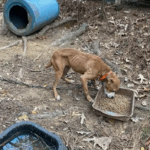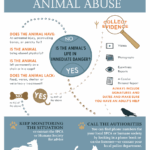The Prevention of Cruelty to Animals Act, 1960, serves as a vital legal framework in India established to combat the injustices faced by animals under human dominion. Enshrining within its provisions the fundamental tenets of humane treatment, this Act delineates a critical stance against various forms of abuse and negligence. However, the effectiveness of this legislation is multifaceted and diverges across various dimensions, reflecting both regional disparities and systemic challenges.
To comprehend the nuances of the Act’s efficacy, it is imperative to explore its foundational pillars. One of the primary objectives of the Act is to promote kindness and prevent unnecessary suffering in animals. Lawmakers recognized an urgent need to address rampant cases of cruelty and exploitation prevalent in various sectors, including agriculture, entertainment, and research. The Act stipulates explicit punishments for offenders, aiming to act as a deterrent against malicious acts. Yet, the enforceability of these provisions often draws scrutiny.
The geographical scope of the Act extends throughout India, yet the implementation varies markedly across states and localities. Urban centers might showcase a heightened awareness of animal rights due to more accessible resources and advocacy groups, thus enhancing the Act’s enforcement. In contrast, rural regions, often beset by economic distress, may overlook the regulations stipulated by the Act due to cultural practices or a lack of education on animal welfare. This disparity throws into sharp relief an essential observation: legal statutes must adapt to local contexts to foster genuine change and uphold their intended purpose.
Another layer to consider is the Act’s enforcement mechanisms. The Prevention of Cruelty to Animals Act empowers designated authorities to investigate cases of animal cruelty. However, the efficiency of these entities often hinges on the commitment and training of law enforcement personnel. Instances arise where insufficient training translates into inadequate response to reports of abuse. This deficiency underscores a broader systemic issue—laws require not only robust language but also a well-prepared and informed apparatus for enforcement.
A poignant issue within this discussion concerns the societal perceptions of animal rights and welfare. Attitudes toward animals are deeply ingrained in cultural, social, and economic fabrics. While urban populations may increasingly align with animal welfare ethics, in some rural areas, traditional norms may conflict with the principles enshrined in the Act. For example, practices such as bullfighting or the use of animals in agricultural labor are often defended on cultural grounds, thereby complicating the enforcement of humane treatment standards. To foster a culture of compassion for animals, education and outreach programs are essential. These initiatives must tailor their messaging to resonate with local values while gently challenging antiquated notions of animal use and treatment.
Furthermore, the judicial interpretation of the Act also plays a consequential role in its effectiveness. Court rulings can either reinforce or undermine the intent of the legislation. For instance, judgements that impose lenient penalties for offenders may inadvertently signal societal tolerance towards animal cruelty, fostering an environment where malefactors feel emboldened to engage in abusive acts without fear of retribution. Conversely, robust judicial backing for the Act can enhance its authority, elevating societal awareness and responsiveness to animal welfare issues.
Another vital aspect of the Prevention of Cruelty to Animals Act resides in the collaboration among various stakeholders, including governmental agencies, non-governmental organizations (NGOs), and the community at large. Active partnerships between advocacy groups and law enforcement can lead to enhanced reporting mechanisms and heightened awareness campaigns. Such alliances can often mobilize community efforts, generating a grassroots movement that galvanizes public opinion against cruelty. Furthermore, NGOs can assist in training law enforcement personnel, ensuring that they are adequately equipped to handle complaints and conduct investigations effectively.
Amidst this landscape, it is crucial to recognize the growth of animal welfare organizations and movements that have emerged as beacons of hope. These groups vigorously advocate for stricter laws and provide education on animal rights. They often act as catalysts for change, leading campaigns that seek not only to bolster existing laws but also to transform societal attitudes towards animal care. Highlighting success stories where community engagement has led to enhanced legal protections for animals can serve to inspire further activism and reform.
A somber undercurrent remains in the examination of the Prevention of Cruelty to Animals Act—namely, the consideration of the broader systemic issues that underlie animal cruelty. Poverty, societal neglect, and ignorance serve as fertile grounds for the perpetuation of inhumane practices. As such, addressing animal welfare must coexist with broader social reforms aimed at alleviating human suffering, which in turn reduces the incidence of animal abuse.
In conclusion, while the Prevention of Cruelty to Animals Act, 1960, is indeed a significant legal framework established to protect the rights and well-being of animals, its effectiveness is contingent upon a plethora of factors. Societal attitudes, regional disparities in enforcement, the role of education, and judicial interpretations all weave into the complex fabric of this legislation’s impact. An unwavering commitment to continual improvement and active participation from all sectors of society will be imperative to enrich the Act’s potential and realize its ultimate vision of a compassionate society, one where animals are treated with dignity and respect.





